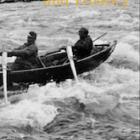Murphy, Raymond. “Extreme Weather and the Energy Metabolism of the City.” Environment and History 8, no. 1 (Feb., 2002): 43–64. doi:10.3197/096734002129342594. This study uses a critical realist perspective to investigate relations between social constructions and the dynamics of nature. The material metabolism of the modern city is based on the redeployment of the processes of nature. This redeployment provides energy for anabolic processes in which complex social and physical hybrids (heating, lighting, transportation, communication, water-supply systems and climate-controlled micro-environments) are built from simpler structures. Massive energy flows of nature can, however, confront the city, unleashing catabolic reactions in which complex social and physical hybrids are broken down to simpler ones. This case-study of the 1998 ice storm in north-eastern North America documents the learning that occurs as a result of nature’s overwhelming energy flows destroying the essential infrastructures of modern urban life. This extreme weather event knocked out for an unusually long period the electrical transmission system that provides the energy for a metropolitan area situated in a dark, frigid environment, and thereby produced the most costly disaster in Canada’s history. All rights reserved. © 2002 The White Horse Press
"Extreme Weather and the Energy Metabolism of the City"
Murphy, Raymond | from Multimedia Library Collection:
Environment and History (journal)


